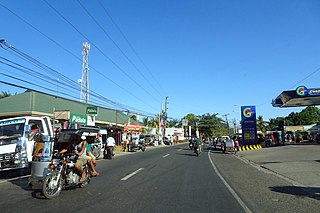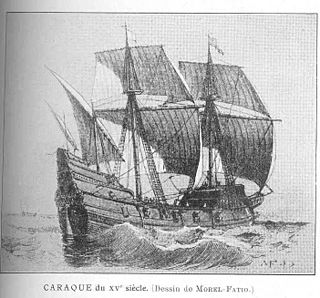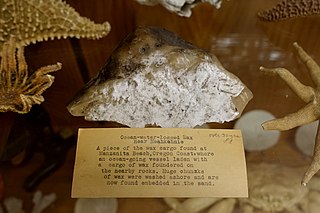See also
| This disambiguation page lists articles associated with the title San Esteban. If an internal link led you here, you may wish to change the link to point directly to the intended article. |
San Esteban may refer to:
| This disambiguation page lists articles associated with the title San Esteban. If an internal link led you here, you may wish to change the link to point directly to the intended article. |
San Pedro is the Spanish language form of Saint Peter. It can refer to:

A shipwreck is the remains of a ship that has wrecked, which are found either beached on land or sunken to the bottom of a body of water. Shipwrecking may be deliberate or accidental. In January 1999, Angela Croome estimated that there have been about three million shipwrecks worldwide.

Carabobo State is one of the 23 states of Venezuela, located in the north of the country, about two hours by car from Caracas. The capital city of this state is Valencia, which is also the country's main industrial center. The state's area is 4,369 km2 (1,687 sq mi) and as of the 2011 census, had a population of 2,245,744.

The Manila Galleons were Spanish trading ships which for two-and-a-half centuries linked the Spanish Captaincy General of the Philippines with Mexico across the Pacific Ocean, making one or two round-trip voyages per year between the ports of Acapulco and Manila, which were both part of New Spain. The name of the galleon changed to reflect the city that the ship sailed from. The term Manila Galleons can also refer to the trade-route itself between Acapulco and Manila, which lasted from 1565 to 1815.

Narvacan, officially the Municipality of Narvacan, is a 2nd class municipality in the province of Ilocos Sur, Philippines. According to the 2015 census, it has a population of 44,006 people.

San Buena Ventura was a 120-ton ship built in Japan under the direction of the English navigator and adventurer William Adams for the shōgun Tokugawa Ieyasu. The ship was built in 1607, and followed the construction of a smaller 80 ton ship, also by William Adams, which had been used for the charting of the waters around Japan. Tokugawa Ieyasu ordered the second, bigger, ship for travels to other countries.

The Graveyard of the Pacific is a somewhat loosely defined stretch of the Pacific Northwest coast stretching from around Tillamook Bay on the Oregon Coast northward past the treacherous Columbia Bar and Juan de Fuca Strait, up the rocky western coast of Vancouver Island to Cape Scott.
The Spanish Armada in Ireland refers to the landfall made upon the coast of Ireland in September 1588 of a large portion of the 130-strong fleet sent by Philip II to invade England.

Subic Bay is a bay on the west coast of the island of Luzon in the Philippines, about 100 kilometres (62 mi) northwest of Manila Bay. An extension of the South China Sea, its shores were formerly the site of a major United States Navy facility, U.S. Naval Base Subic Bay, now an industrial and commercial area known as the Subic Bay Freeport Zone under the Subic Bay Metropolitan Authority.

SS Valencia was an iron-hulled passenger steamer built for the Red D Line for service between Venezuela and New York City. She was built in 1882 by William Cramp and Sons, one year after the construction of her sister ship Caracas. She was a 1,598 ton vessel, 252 feet (77 m) in length. In 1897, Valencia was deliberately attacked by the Spanish cruiser Reina Mercedes off Guantanamo Bay, Cuba. The next year, she became a coastal passenger liner on the U.S. West Coast and served periodically in the Spanish–American War as a troopship to the Philippines. Valencia was wrecked off Cape Beale, which is near Clo-oose, on the west coast of Vancouver Island, British Columbia, on 22 January 1906. Since her sinking killed 100 people, some classify the wreck of Valencia as the worst maritime disaster in the "Graveyard of the Pacific", a famously treacherous area off the southwest coast of Vancouver Island.

Urca de Lima is a Spanish shipwreck near Fort Pierce, Florida, United States. She was part of the 1715 Treasure Fleet, herself, one of the numerous Spanish treasure fleets sailing between Spain and her colonies in the Americas. The wreck is located north of Fort Pierce Inlet, 200 yards off the shore from Jack Island Park. It became the first Florida Underwater Archaeological Preserve when dedicated in 1987. This was followed on May 31, 2001 with its addition to the U.S. National Register of Historic Places.

The 1715 Treasure Fleet was a Spanish treasure fleet returning from the New World to Spain. At two in the morning on Wednesday, July 31, 1715, seven days after departing from Havana, Cuba, under the command of Juan Esteban de Ubilla, eleven of the twelve ships of this fleet were lost in a hurricane near present-day Vero Beach, Florida. Because the fleet was carrying silver, it is also known as the 1715 Plate Fleet. Some artifacts and even coins still wash up on Florida beaches from time to time.

The Mansfield Cut Underwater Archeological District is an 18.31-acre (74,100 m2) area located near the city of Port Mansfield, Texas, United States, in the waters off Kenedy County and Willacy County, Texas. Located offshore in the Gulf of Mexico near the Port Mansfield Cut, the site is the location of the Mansfield Cut Wrecks and has been listed on the National Register of Historic Places since 1974.

Barkley Sound, also known historically as Barclay Sound, is south of Ucluelet and north of Bamfield on the west coast of Vancouver Island and forms the entrance to the Alberni Inlet. The Broken Group archipelago lies in the sound. Barkley Sound is part of the traditional territory of the Nuu-cha-nulth First Nations. In 1787, Captain Charles William Barkley of Imperial Eagle, explored the sound and named it after himself. Barkley traveled with his 17-year-old bride, Frances Barkley, the first European woman to visit what is now British Columbia.
Carrier Pigeon was an American clipper ship that was launched in the fall of 1852 from Bath, Maine. Her value was estimated at $54,000. She was wrecked on her maiden voyage off the north coast of Santa Cruz County, California.
The San Esteban was a ship of the Spanish Armada that was wrecked on the west coast of Ireland in 1588. All the survivors were killed when they reached the shore or taken prisoner and later hanged.

San Esteban was a Spanish cargo ship that was wrecked in a storm in the Gulf of Mexico on what is now the Padre Island National Seashore in southern Texas on 29 April 1554.

The beeswax wreck is an as-yet-undiscovered shipwreck somewhere off the coast of the U.S. state of Oregon, near Neahkahnie Mountain and the mouth of the Nehalem River in Tillamook County. The ship, thought to be a Spanish Manila galleon that was wrecked in the late-1600s, was carrying a large cargo of beeswax, lumps of which have been found scattered along Oregon's north coast for at least two centuries.